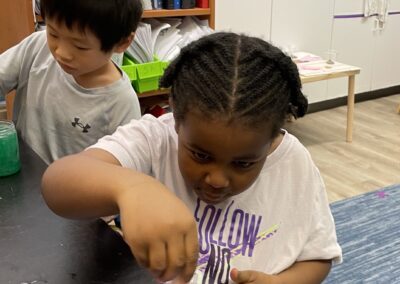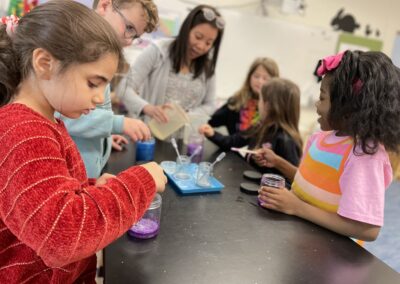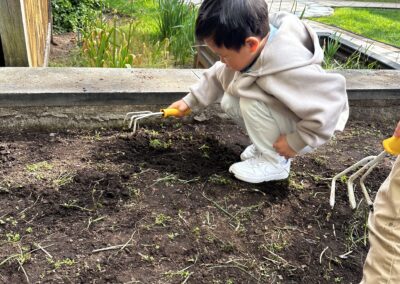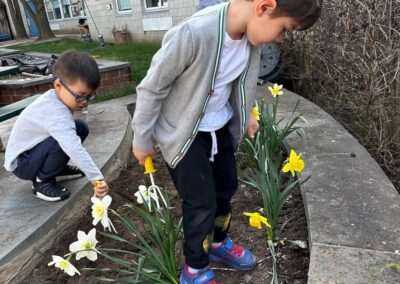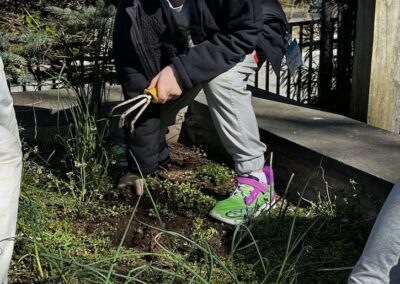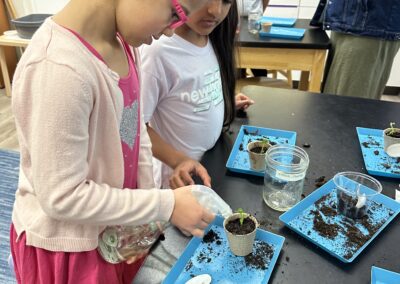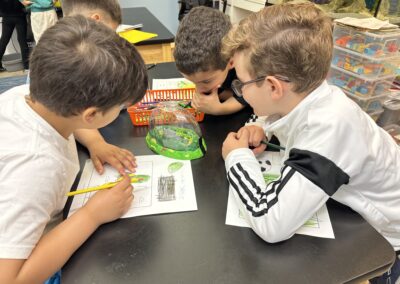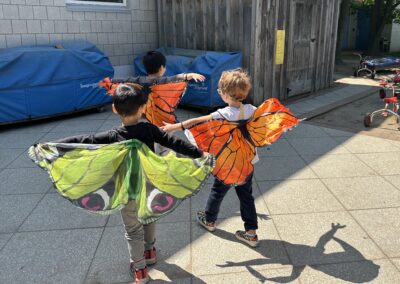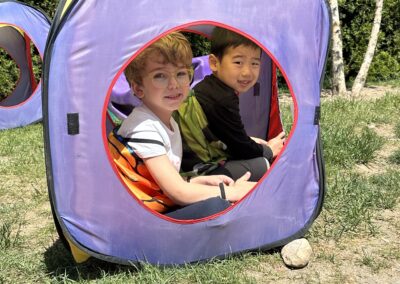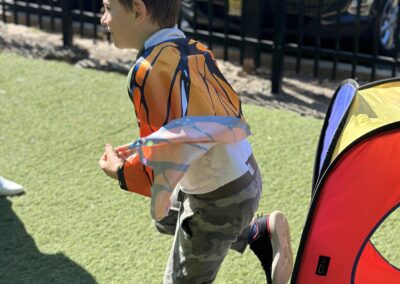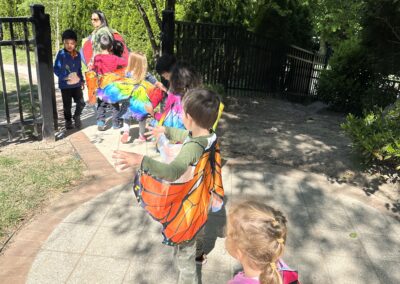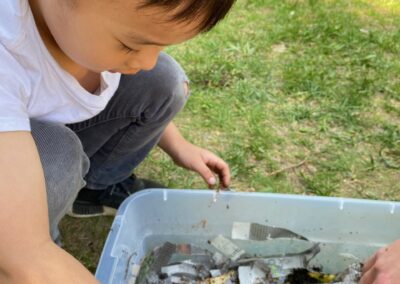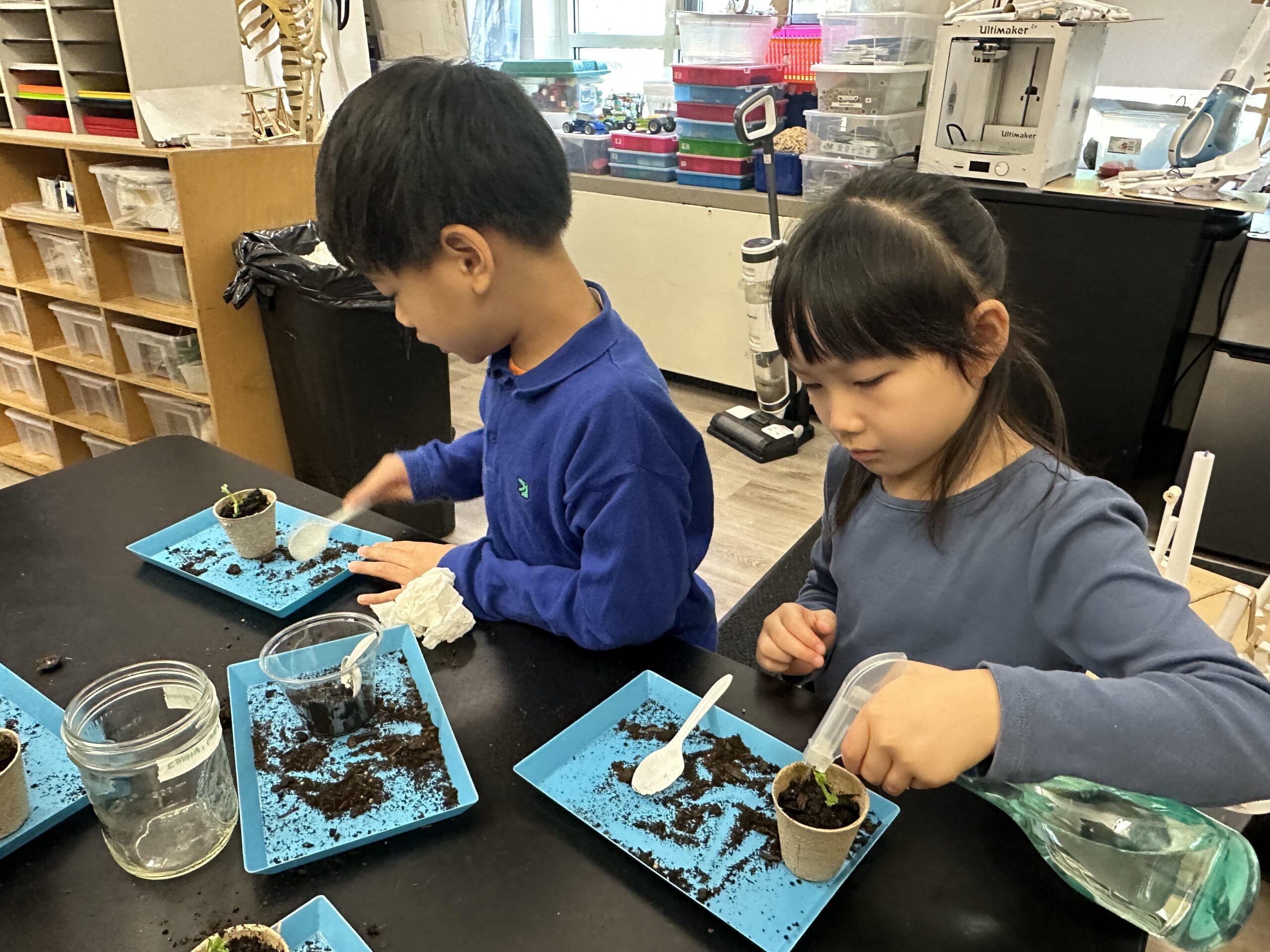
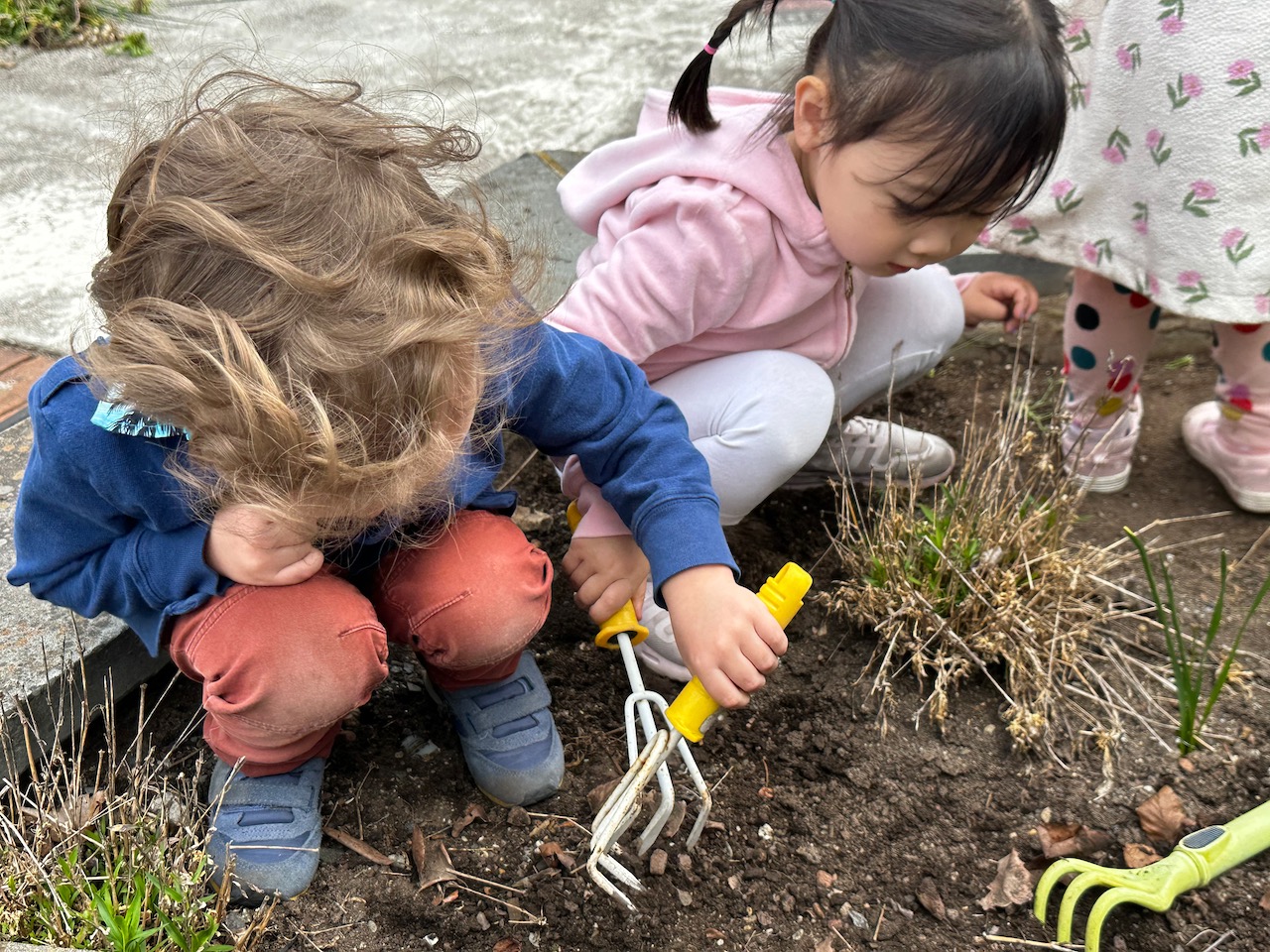
As the scent of blooming flowers and the sun’s warmth graces our campus once again, springtime provides the perfect opportunity for young D-E learners to delve into the wonders of nature and expand their understanding of the world around them. These past few months have been filled with excitement, inquiry, and growth for preschool, kindergarten, and first-grade scientists.
Preschool 3 and 4 students have been industriously weeding our garden beds in preparation for planting flowers and vegetables. They took pleasure in pulling out unwanted plants and were delighted when they unearthed worms or other bugs in the soil. They learned about the importance of worms to healthy soil and considered ways that we can care for worms and other creatures that are beneficial to our environment. Preschool 4 even started a vermicomposting bin to observe worms that are busy at work creating healthy compost out of food scraps provided by the students. The compost that is created can help to provide nutrition for the plants that will grow in our garden.
To deepen their understanding of plants, the kindergarteners dissected bean seeds and investigated the parts of a seed. They learned that seeds have a protective coat, an embryo that forms the root and stem of the plant, and food to sustain the germinating baby plant. They germinated sugar snap pea seeds in mason jars, using only paper towels and water, and then planted the young seedlings in soil. As they wait for their young plants to grow, the kindergarten students are also helping to ready our garden beds for planting.
In acknowledging the change in weather from winter to spring, the first graders wondered about the reason for the warming temperatures and lengthening of daylight hours. This led to a discussion of earth’s place in the solar system and its orbit around the sun, as well as an exploration of our enchanting solar system. They came to class with a lot of information about our solar system, but also had many questions about our universe that we were able to research and learn about together. Building upon their knowledge, they delved into a deeper understanding of the different planets, their characteristics, and their placement in the solar system. One interesting fact that they learned is that a day on Venus is longer than a year on Venus! As a culminating activity, the students created galaxy jars – a calming sensory jar reminiscent of our Milky Way galaxy.
Growth and change surround us in nature this time of year. Metamorphosis is an example of this and the life cycle of insects, such as butterflies and ladybugs, captures the interest of all of our scientists. In the exploratorium, the students observed these insects as they developed from larvae into pupae. Soon enough, they will emerge as adult butterflies and ladybugs. We are eagerly awaiting this change and look forward to when we can release these amazing insects into nature so that they may enjoy all that springtime has to offer.

